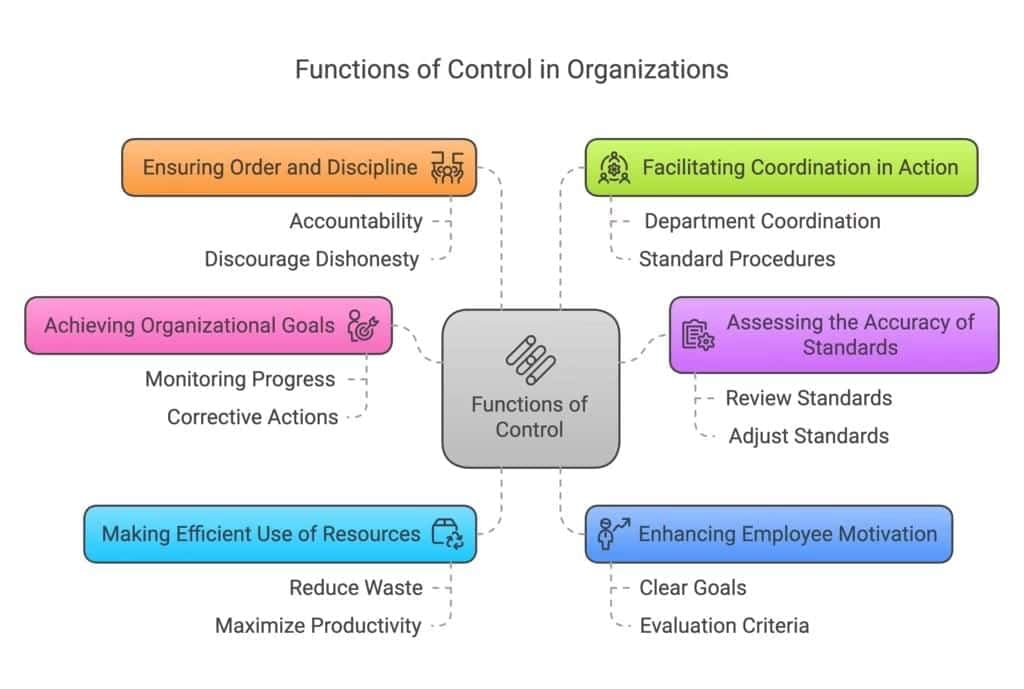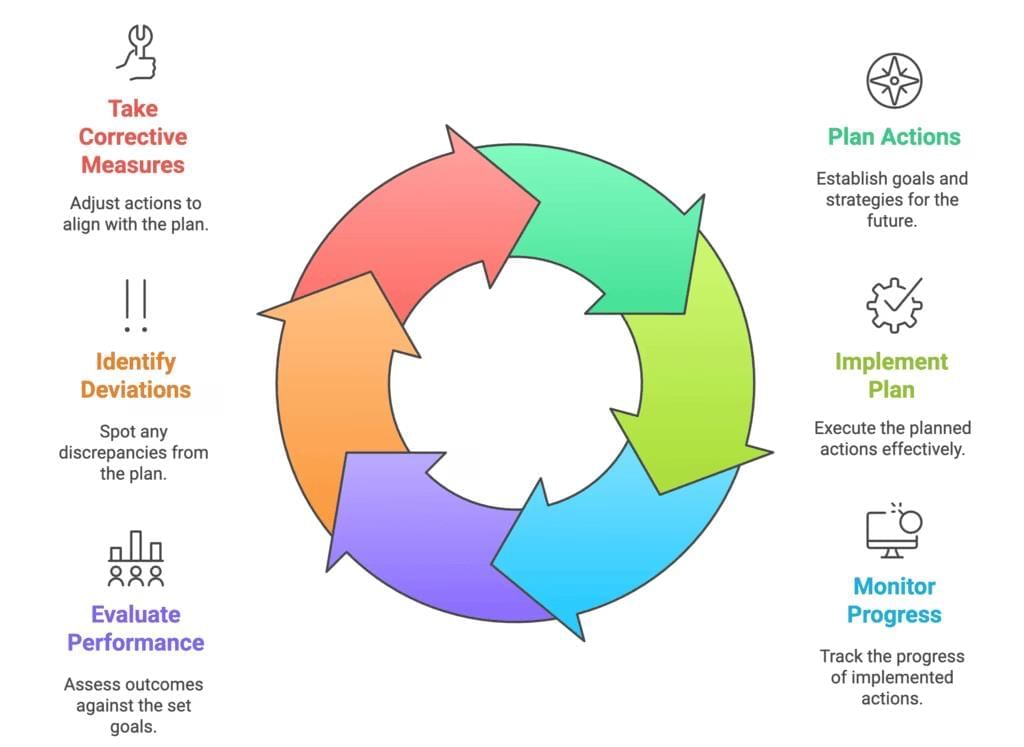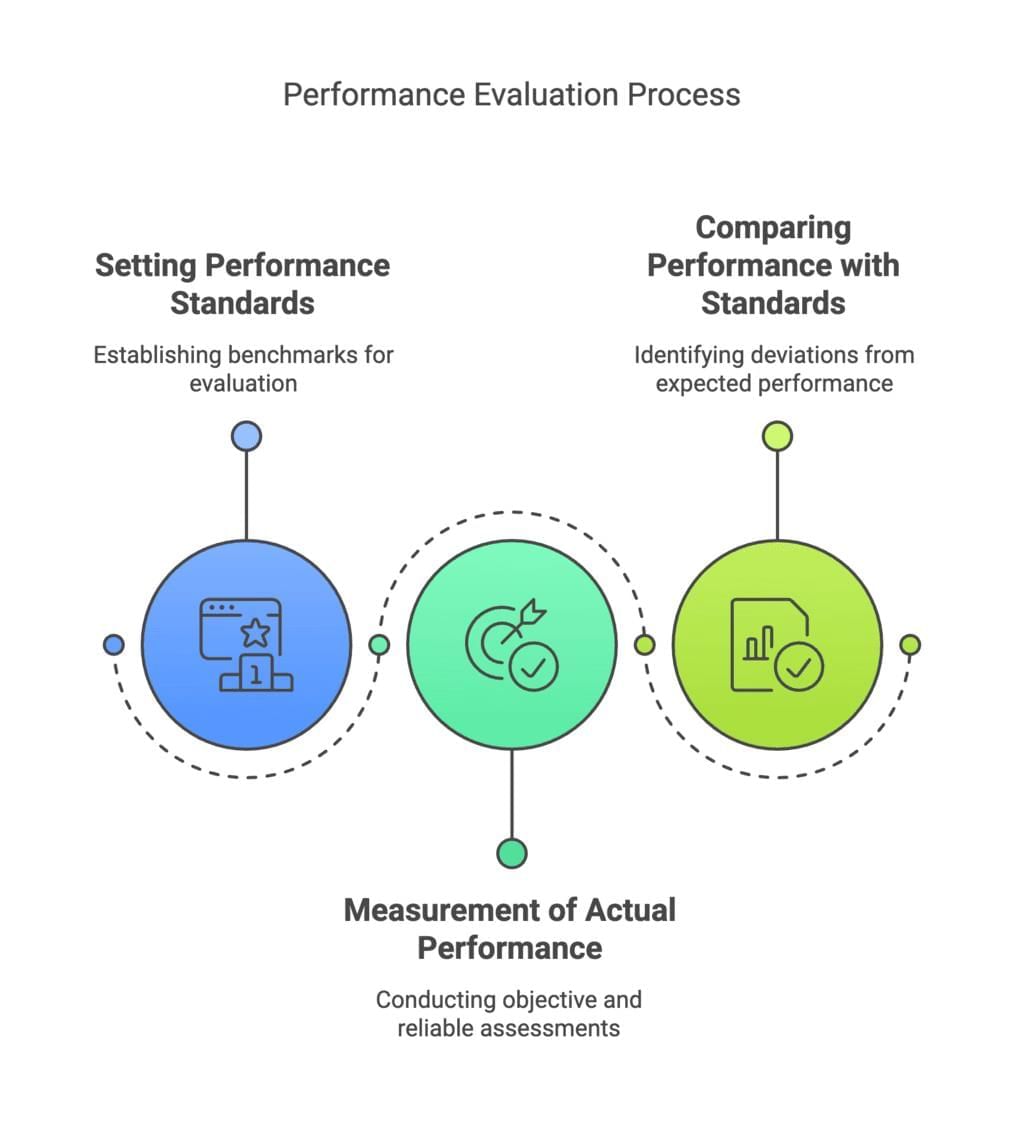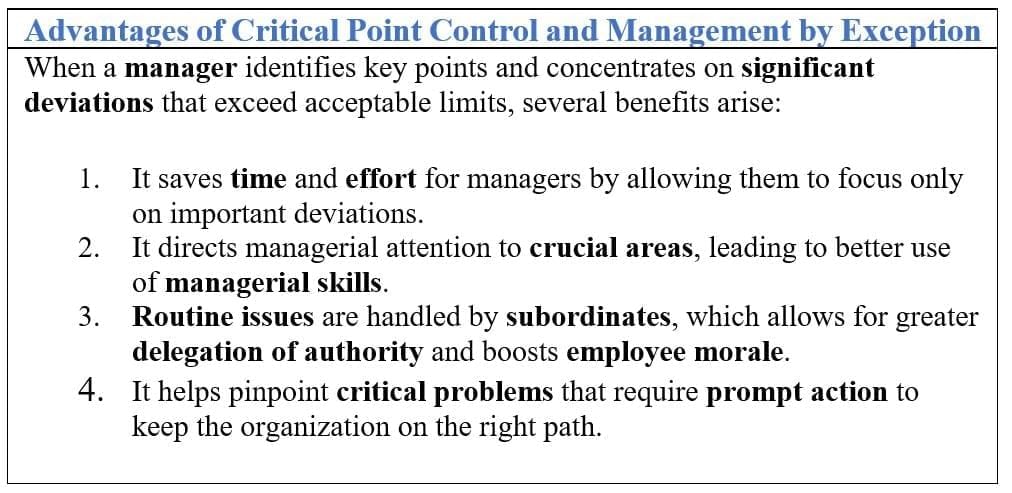Controlling - Introduction to Management - Bank Exams PDF Download
Understanding the Concept of Controlling in Management
- Controlling, often referred to as management oversight, is a crucial function in ensuring that subordinates meet the desired outcomes as per the plans laid out by the organization.
- This function involves closely monitoring and regulating various activities to ensure they are in line with the organization's objectives and plans.
- The primary focus of management oversight is to ensure the effective utilization of resources to achieve the set goals and objectives. It is a function that is necessary at all levels of management, whether it be top-level, middle-level, or lower-level management.
- Management oversight is not limited to specific sectors but is vital across various fields such as education, military, healthcare, and business.
- A common misconception is that management oversight is the final function in the management process. In reality, it is a continuous loop that feeds back into the planning process, aiding in future planning activities.
- The process of management oversight involves evaluating the performance of activities against set standards, identifying any discrepancies or deviations, and implementing corrective measures to address these issues.
- Analyzing these deviations is crucial as it helps in refining the future planning process by addressing the identified shortcomings.
- Once a management cycle is completed, management oversight plays a pivotal role in improving the planning process for the upcoming cycles, ensuring a continuous improvement loop.

Control in Management
Control is an essential function in management that ensures activities are carried out as planned. Without proper control, even the best strategies can fail. Here are the key ways an effective control system benefits an organization:
1. Achieving Organizational Goals
- Control monitors progress towards goals by identifying deviations from the plan.
- It indicates the corrective actions needed to keep the organization on track towards achieving its objectives.
2. Assessing the Accuracy of Standards
- A good control system checks if the set standards are achievable and realistic.
- It allows management to review and adjust these standards in response to internal or external changes.
3. Making Efficient Use of Resources
- Control helps reduce waste and prevent the misuse of resources.
- It ensures that every task is performed according to established standards.
- This approach enables the organization to achieve maximum productivity while using fewer resources.
4. Enhancing Employee Motivation
- Setting clear performance goals motivates employees to strive for better outcomes.
- Understanding the evaluation criteria encourages employees to improve their performance.
5. Ensuring Order and Discipline
- Control promotes a disciplined work environment by fostering accountability and encouraging responsible behavior.
- It discourages dishonesty by holding employees accountable for their actions.
6. Facilitating Coordination in Action
- Control helps different departments and individuals work together towards common goals.
- Coordinating activities using standard procedures ensures the organization operates smoothly.

Limitations of Controlling
1. Difficulty in Setting Quantitative Standards
- The effectiveness of a control system diminishes when standards are not clearly defined with numerical values. This makes it challenging to measure performance and compare it against those standards.
- Areas such as employee morale , job satisfaction , and human behaviour are particularly difficult to quantify and set standards for.
2. Little Control over External Factors
- Businesses often face challenges in managing external factors such as government policies , technological changes , and competition .
3. Resistance from Employees
- Employees may resist control measures because they perceive them as restrictions on their freedom. For example, they might object to strict monitoring through Closed Circuit Televisions (CCTVs) .
4. Costly Affair
- Implementing control systems can be expensive in terms of money , time , and effort .
- Smaller businesses may find it challenging to afford costly control systems and need to ensure that the expenses do not outweigh the benefits.
Relationship between Planning and Controlling
- Planning and controlling are fundamental aspects of management that are intricately linked and essential for the success of an organization.
- After a plan is put into action, controlling becomes vital for monitoring progress , evaluating performance , identifying deviations , and taking corrective measures to stay aligned with the plan.
- Conversely, controlling without planning is ineffective as it lacks the necessary direction and benchmarks for assessment.
- While planning is future-oriented, controlling focuses on past performance to highlight any discrepancies from established standards.
- Although people often perceive planning as looking ahead and controlling as reviewing the past, both activities are interconnected and work in tandem to improve future performance.

Planning and Controlling Complement Each Other
- Both processes are crucial for the success of an organization.
- Controlling ensures that plans are being followed correctly.
- Effective planning provides the necessary framework for controlling activities.
- Controlling helps identify areas that need adjustments in planning.
- Together, both functions enhance overall performance and effectiveness.

Controlling Process
- Planning is based on accurate data, which makes the controlling process more efficient and effective.
- Controlling offers insights from past experiences that can improve future planning, creating a cyclical and reinforcing relationship between the two functions.
Controlling is a systematic process that involves several steps:
- Setting performance standards
- Measuring actual performance
- Comparing actual performance with standards
- Analyzing deviations
- Taking corrective action
Step 1: Setting Performance Standards
- Performance standards serve as benchmarks for evaluating actual performance.
- Standards can be quantitative (such as cost, revenue, or product units) or qualitative (like employee motivation).
- It is advisable for managers to establish precise quantitative standards to facilitate easier comparison.
- Qualitative standards should be clearly defined to enable simpler measurement.
- Standards need to be flexible and subject to modification in response to changing business environments.
Step 2: Measurement of Actual Performance
- Performance measurement should be conducted in an objective and reliable manner.
- Various techniques for measurement include personal observation, sample checking, and performance reports.
- Ideally, measurements should be taken using the same units as the standards to simplify comparison.
- Measurement can occur during or after task completion, depending on the nature of the work.
Step 3: Comparing Actual Performance with Standards
- After measuring actual performance, it is compared with the established standards.
- This comparison is essential for identifying any deviations from the expected performance.

Objective
- The comparison involves revealing differences between actual and desired results. Quantitative standards make comparison easier. For example, a worker's weekly output can be compared to the standard output .
Step 4: Analyzing Deviations
1. Critical Point Control
- This approach focuses on the key result areas ( KRAs ) that are crucial to organisational success. Monitoring critical points where issues can significantly affect the organisation. For instance, in a manufacturing setting, a 5% increase in labour costs may be more critical than a 15% increase in postal charges.
2. Management by Exception
- This control principle is based on addressing significant deviations beyond permissible limits. It brings only major deviations to management's attention for immediate action.
Identifying and Analyzing Deviations
- Deviations can cause unrealistic standards, defective processes, resource inadequacy, structural drawbacks, organisational constraints, and external factors.
Importance of Identifying Causes:
- Reporting deviations and their causes is essential for implementing corrective actions .
Step 5: Taking Corrective Action
When Corrective Action is Needed
- Required when changes go beyond acceptable limits, especially in important areas.
- Immediate managerial attention is needed to stop these issues from happening again and to ensure compliance with standards.
Examples of Corrective Actions

Training Employees to Meet Production Goals
To ensure we meet our production targets, we are focusing on training employees to meet production goals that have not yet been achieved and providing additional resources for projects that are currently not on track. Furthermore, we will adjust our standards if issues persist despite management intervention.
Key Actions
- Training employees to achieve production goals that are currently unmet.
- Providing extra resources for projects that are not progressing as expected.
- Adjusting our standards if issues continue despite management's involvement.
FAQs on Controlling - Introduction to Management - Bank Exams
| 1. What is the main purpose of controlling in management? |  |
| 2. What are some limitations of the controlling process in management? |  |
| 3. How does planning relate to controlling in management? |  |
| 4. What are the key steps in the controlling process? |  |
| 5. Why is employee training important in relation to achieving production goals? |  |














